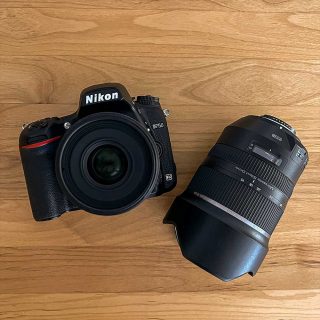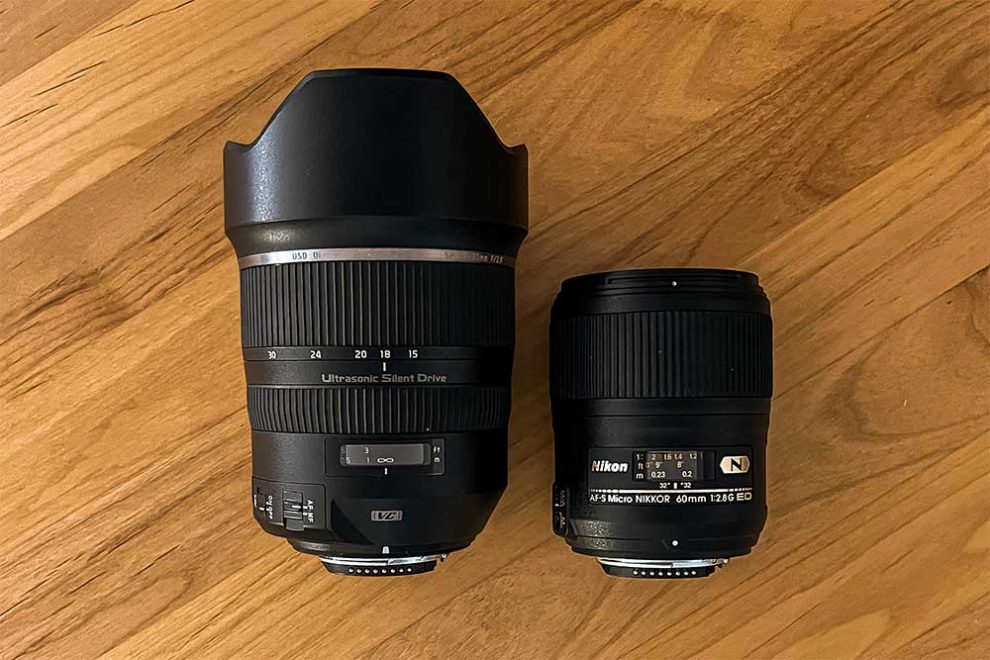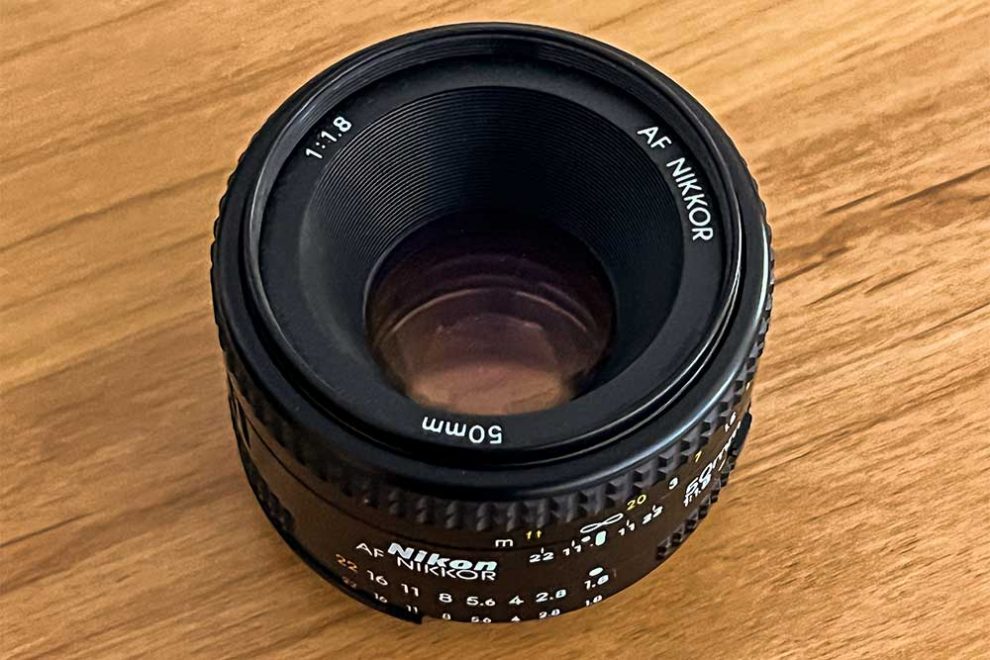 For many years, zoom lenses in the lower price segment were considered tourist stuff. Dad went on vacation with his new SLR camera and two zoom lenses and was able to easily capture all the family’s holiday scenes on film or slides. This worked reasonably well as long as the photos weren’t substantially enlarged. Otherwise the weaknesses of these inexpensive lenses became noticeable. The question of zoom lens or prime lens did not come up for professionals. For near distance images they photographed almost exclusively with prime lenses, only for distant scenes they chose – mostly for cost and weight reasons – professional zooms.
For many years, zoom lenses in the lower price segment were considered tourist stuff. Dad went on vacation with his new SLR camera and two zoom lenses and was able to easily capture all the family’s holiday scenes on film or slides. This worked reasonably well as long as the photos weren’t substantially enlarged. Otherwise the weaknesses of these inexpensive lenses became noticeable. The question of zoom lens or prime lens did not come up for professionals. For near distance images they photographed almost exclusively with prime lenses, only for distant scenes they chose – mostly for cost and weight reasons – professional zooms.
Zoom Lens or Prime Lens – what is the Difference?
The difference is quite easy to explain: With a prime lens you capture one certain angle of view. For different angles of view (whole room or details in the distance) you need different lenses with different focal lengths. With a zoom lens, you set the focal length to different focal lengths using a rotating ring or a zoom switch, and are therefore able to choose from a range of angles of view. So you save a significant amount of photo baggage because you only need one lens for multiple scenarios. Essentially, a distinction is made between:
- Ultra wide-angle zooms (14-30 mm focal length*),
- Normal zooms (24-70 mm focal length*) and
- Telephoto zooms (70-200 mm focal length*).
Of course, there are lenses for special applications that go beyond the values mentioned. Other lenses are designed with specific target groups in mind for other focal length ranges. Popular with tourists here are so-called superzooms, which cover an enormous range from 27-300 mm focal length*, but usually do not deliver optimal image quality.
*Focal Length Specifications
In this article, I use focal length specifications that apply to cameras with full-frame sensors (24 x 36 mm). However, many cameras for the semi-professional sector have smaller sensors, for example described as DX or APS-C, for reasons of cost and space. Important when buying a lens: In order to capture the same image section on this smaller image area, you need lenses with smaller focal lengths. These can easily be converted – by a factor of 1.5 for Nikon and Sony, and by a factor of 1.6 for Canon.
- The wide-angle zoom with 14-30 mm on the full format therefore requires a focal length of around 10-20 mm for the same image crop on an APS-C camera.
- 24-70 mm on full format corresponds to about 16-50 mm on APS-C.
- 70-200mm on full frame is approximately 50-130mm on APS-C.
What are the Pros and Cons?
Zoom lens or prime lens – both systems have their advantages and disadvantages.
Zoom Lenses
The advantage of a zoom lens is clearly the mentioned variability as well as the lower packing size and weight compared to several prime lenses that would be required.
Photographers like to cite two key downsides to zooms.
- On the one hand, there is a poorer image quality – which can be seen in the extreme areas, especially at the edges of the frame. It manifests itself in color fringes on contrasting edges, decreasing sharpness, darkening in the image corners and curved edges and lines. The number and severity of these errors decreases as the lens price increases. The larger the focal length range, the more these image errors are noticeable (keyword superzoom).
- As a further disadvantage of zooms, photographers like to mention that these lenses are not very fast due to their design. This means that you are rather likely to blur photos in dark scenarios and that you cannot separate the main subject from the background or foreground as well (keyword depth of field).
Prime Lenses
Their advantage is clearly a better image quality. Fewer optical elements and the lack of a zoom mechanism inside the lens leave enough room for larger and better glass elements and more precise adjustment of the components. In addition, individual primes are usually smaller and lighter. So if you know in advance exactly which scenes to expect, then you can trim your photo luggage to be lightweight by packing exactly the prime(s) you need.
And then the popular optical property of the so-called bokeh comes into play. With a particularly large aperture, the photographer is able to blur the foreground and background and thus only focus on the main subject. Classic applications are portrait photos or the popular holiday image „sharp flower in front of a blurred background“.
The disadvantage of the prime is that it is limited to exactly one angle of view. This can be counterproductive in unclear or quickly changing photo situations.

Comparison zoom lens or prime lens: left ultra-wide-angle zoom Tamron 15-30 mm (14.5 cm long, 9.8 cm diameter, 1,100 g), right prime Nikon 60 mm macro (8.9 cm long, 7.3 cm diameter, 425 g) – both suitable for Nikon full-frame cameras with F bayonet mount.
What does this Mean for Real Estate Photography?
When it comes to real estate photos, two different wishes usually collide: you want the best possible shots, but at the same time you want to travel with the lightest possible photo luggage. My recommendation is therefore not a zoom lens OR a prime lens, but rather a zoom AND a prime – where the wide-angle zoom remains the main tool.
Angle of View
When you photograph a property, you expect different rooms with different sizes. As a result, a zoom lens is ideal because you can cover different scenarios with one lens. For indoor shots, it should be an ultra-wide-angle zoom that has a focal length of at least 16-24 mm*. This means that most normal-sized rooms can be shown in full format.
Image Quality
But what about the poorer image quality of zoom lenses compared to primes? When buying a lens, do not grab the cheapest. If you stick with the well-known camera or lens brands, you can save quite a bit of image quality.
This rescue operation then continues with the on-site photography. Real estate is – who would have thought it – mostly about static scenes. So the following procedure has proven itself for a good image quality:
- Stabilize the camera.
- Set a larger aperture value for the zoom lens.
- Compensate the associated loss of light quantity with a longer exposure time.
By stabilizing the camera, for example on a tripod, you prevent blurred images and can take pictures with long exposure times. Due to the smaller aperture value, the visible quality defects can be significantly reduced in some cases. Some other image errors can then be made almost invisible in image processing with a mouse click.
Separation & Depth of Field
You do not need the lens function to separate individual objects for frame-filling room shots. After all, the entire room should be sharp. In this respect, you have an advantage with an ultra-wide-angle zoom. For detailed shots, however, I recommend getting a small but good prime lens with a focal length of around 50 mm*. These relatively inexpensive miracle lenses can be very fast and thus achieve a wonderful separation effect, so that impressive details are shown to their best advantage.
Price-Performance
And this is where an old photographer’s rule immediately becomes clear: a photo can only achieve brilliance and sharpness with an excellent lens. You should stay away from special offers or so-called cheap kit lenses (which are usually included with the camera) for commercial photo jobs. Decisive financial advantage: A higher-quality and not exactly cheap lens will easily outlive several camera models of the same system. Maintain it well, and it can be a one-time purchase. My oldest lens is over 30 years old and works perfectly on the 7th generation of cameras.

Good care – long-lasting joy: 50 mm prime bought in 1991 and still in use today. Thanks to the large aperture, details can be separated very nicely, while the foreground and background are blurred.
Conclusion
Deciding whether you’re better off working with a zoom lens or a prime lens in real estate photography is relatively easy.
The zoom lens is the workhorse and will do a great job of helping you in the vast majority of indoor situations as well as outdoors.
- You save space and weight.
- The image quality is sufficiently good from the middle price segment.
- It is important to hit the right focal length range. 14-30mm* (10-20mm on the small sensor) is ideal.
A prime of around 50 mm* is suitable for detailed photos, so that the subject can be separated from the background.
If you would like to learn more about the effects of aperture, exposure time, depth of field and focal length and an elegant and efficient photo workflow with tripod, camera and lenses, then I can only invite you to my photo workshops for real estate professionals.
Lens recommendations – zoom lens or prime lens
Depending on the camera type and lens mount, there are various suitable zoom lenses
- Nikon
- DSLR F Full Frame Sensor: Tamron SP 15-30 mm
- DSLR F DX Sensor: Nikon AF-P 10-24 mm
- DSLM Z Full Frame Sensor: Nikon Z 14-30 mm
- DSLM Z DX Sensor: Nikon AF-S 10-24 mm mit FTZ-Adapter
- Canon
- DSLR E Full Frame Sensor: Canon EF 16-35 mm
- DSLR E APS-C Sensor: Sigma 10-24 mm
- DSLM R Full Frame Sensor: Canon RF 15-30 mm
- Sony
- DSLM Full Frame Sensor: Sony FE 16-35 mm
- DSLM APS-C Sensor: Sony SEL 10-18 mm
With the primes for detail shots, it makes little sense to differentiate between the sensor sizes. On full format it is then about 50 mm focal length* and on the smaller sensors it is just 70-80 mm effective focal length*.
- Nikon
- DSLR F: Nikon AF-S 50 mm
- DSLM Z: Nikon Z 40 mm
- Canon
- DSLR E: Canon EF 50 mm
- DSLM R: Canon RF 50 mm
- Sony
- DSLM : Sony FE 50 mm

